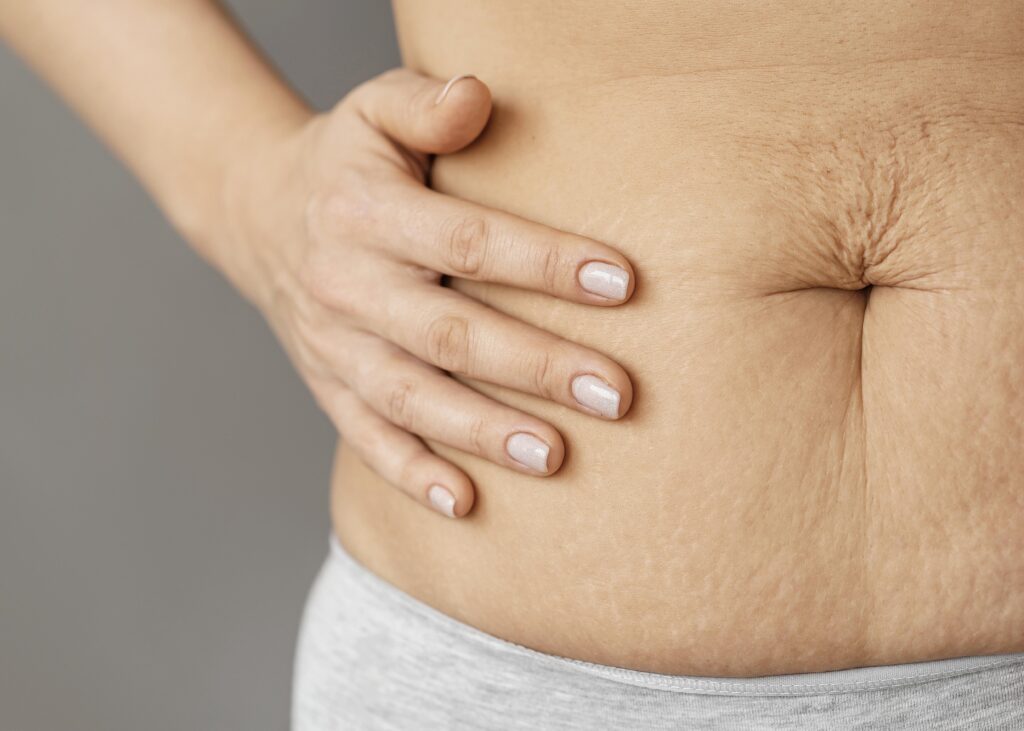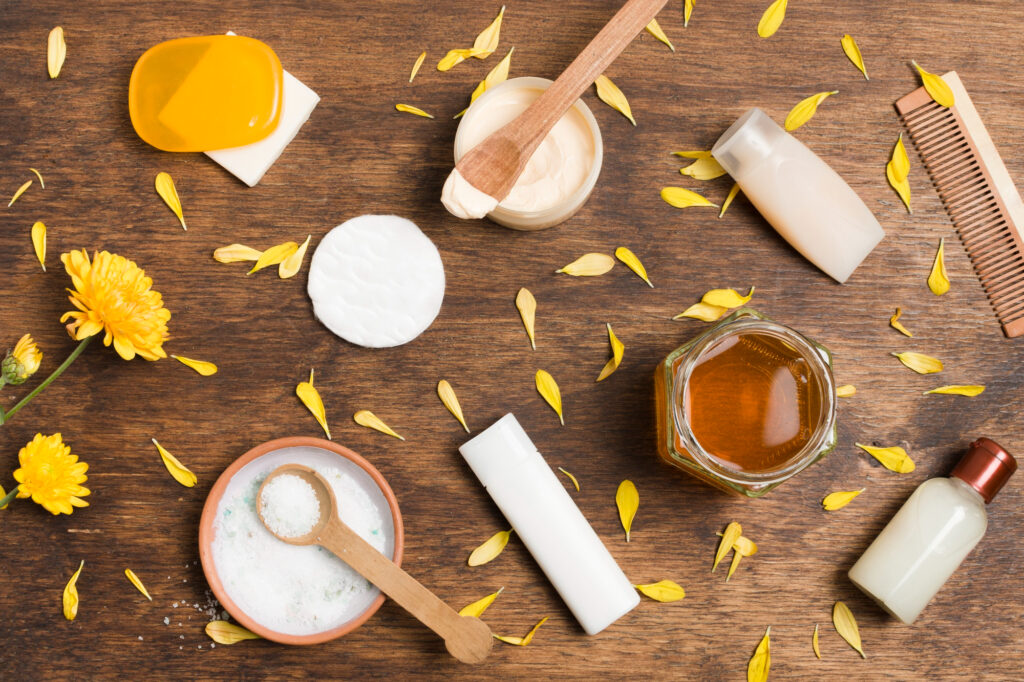
Ever wonder what’s lurking in those store-bought beauty products? Do you crave a luxurious spa experience without the hefty price tag or harsh chemicals? Look no further than your own kitchen! DIY beauty products made with sustainable ingredients are a fantastic way to unleash your inner alchemist, pamper your skin and hair, and reduce your environmental impact.
This guide dives into the wonderful world of DIY beauty, with easy-to-follow recipes, tips on choosing sustainable ingredients, and the benefits of going natural. So, grab your mixing bowls, unleash your creativity, and get ready to create some spa-worthy treats for yourself and your loved ones!
Why Go DIY?
There are many reasons to embrace DIY beauty:
Also Read: 10 Best GMO-Free Skin-Friendly Solutions: Pamper Your Skin Naturally!
- Know what you’re putting on your skin: By making your own products, you have complete control over the ingredients. This is especially beneficial if you have sensitive skin or allergies.
- Save money: DIY beauty products are generally much cheaper than their store-bought counterparts.
- Reduce waste: You can often reuse containers you already have, eliminating the need for unnecessary packaging.
- Sustainable choices: Many natural ingredients are readily available and don’t require harsh processing or transportation.
- The fun factor! Making your own beauty products can be a fun and rewarding experience.
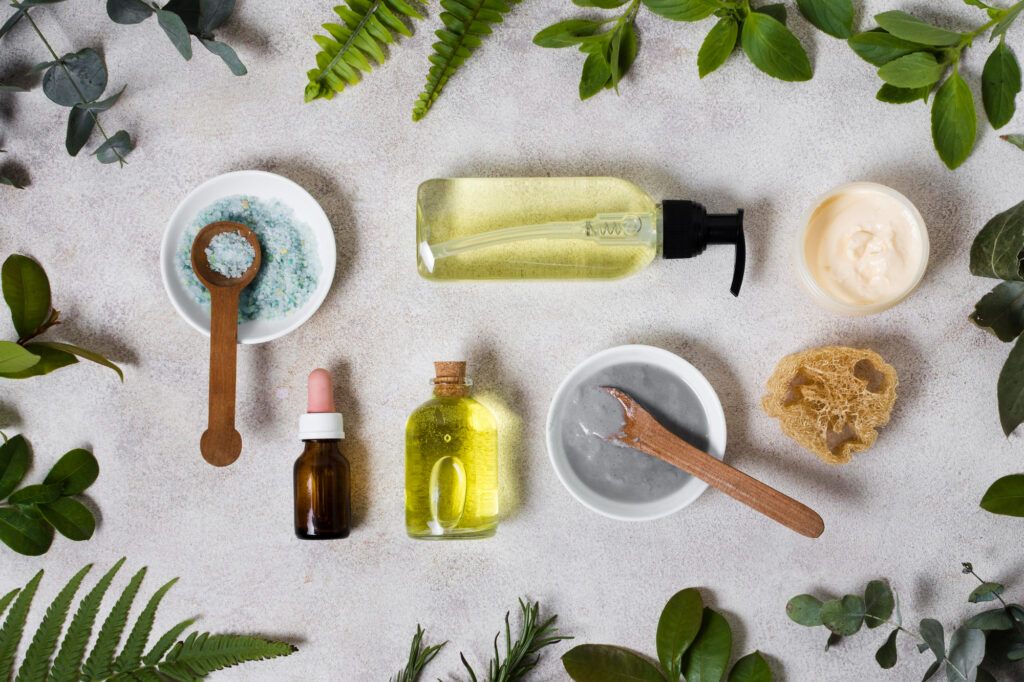
Embracing Sustainability:
Sustainability is key when it comes to DIY beauty. Here are some tips for choosing eco-friendly ingredients:
- Local and organic: Look for locally sourced, organic ingredients whenever possible. This reduces your carbon footprint and supports local farmers.
- Fair trade: Opt for fair trade ingredients, especially for products like cocoa butter or shea butter. This ensures fair wages and working conditions for farmers.
- Minimize waste: Choose ingredients with minimal packaging or opt for bulk options.
- Repurpose and reuse: Don’t throw away old jars or containers! Clean and reuse them for your DIY creations.
Also Read: Are Clay Masks Good for Dry Skin? The Ultimate Guide
DIY Beauty Essentials:
Before we dive into recipes, let’s explore some essential ingredients you might find yourself using frequently:
- Carrier oils: These oils are the base of many DIY beauty products. Popular carrier oils include coconut oil, jojoba oil, sweet almond oil, and avocado oil. Choose the oil best suited for your skin type.
- Butters: Shea butter and cocoa butter are commonly used for their moisturizing and nourishing properties.
- Honey: Raw honey is a natural humectant, meaning it attracts and retains moisture. It’s also known for its antibacterial properties.
- Essential oils: These concentrated plant extracts offer a range of benefits like aromatherapy and additional skin-loving properties. Use them sparingly, and always dilute them in a carrier oil before applying topically. Important Note: Essential oils are potent and can irritate the skin in some cases. Always do a patch test before using any essential oil on your skin.
- Clays: Clays like kaolin clay and bentonite clay are excellent for drawing out impurities and creating detoxifying masks.
- Oats: Ground oatmeal has calming and anti-inflammatory properties, making it a great choice for sensitive skin.
DIY Beauty Products With Sustainable Ingredient
Now that you have the basics down, here are some simple and effective DIY beauty recipes to get you started:
Soothing Oatmeal Face Mask:
This mask is perfect for calming irritated skin and reducing redness.
Ingredients:
- 1/2 cup rolled oats, ground into a fine powder (you can use a food processor or blender)
- 2 tablespoons plain yogurt (full-fat yogurt works best)
- 1 tablespoon honey
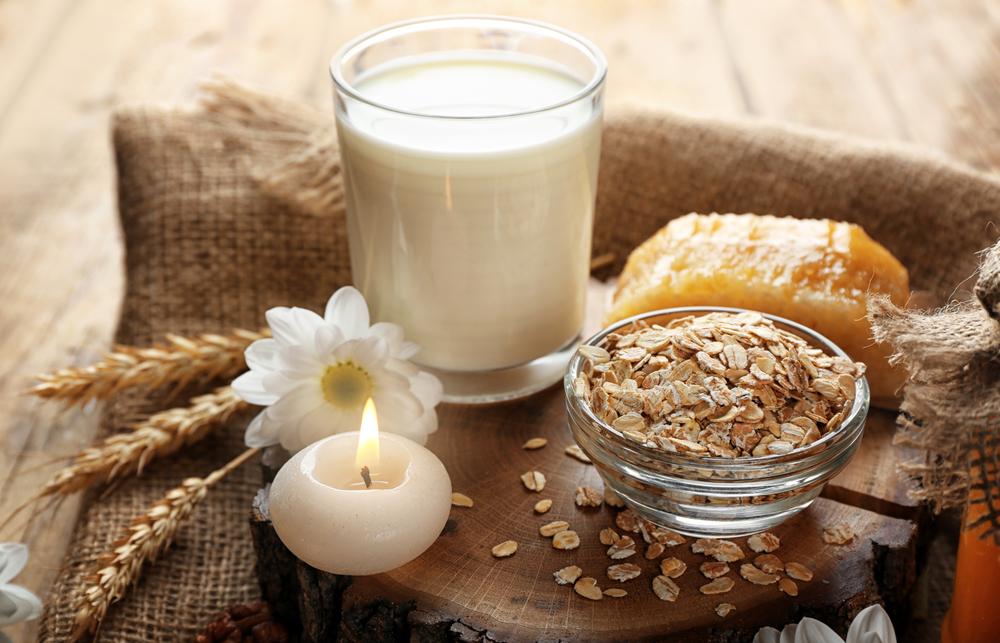
Instructions:
- In a bowl, combine the ground oats, yogurt, and honey.
- Mix well to form a thick paste.
- Apply the mask to clean, dry skin, avoiding the eye area.
- Leave on for 15-20 minutes.
- Rinse thoroughly with warm water and pat your face dry.
Nourishing Coconut Hair Mask:
This mask provides deep hydration and nourishment for dry, damaged hair.
Ingredients:
- 2 tablespoons coconut oil, melted (solid at room temperature)
- 1 tablespoon honey
- 1 ripe avocado, mashed
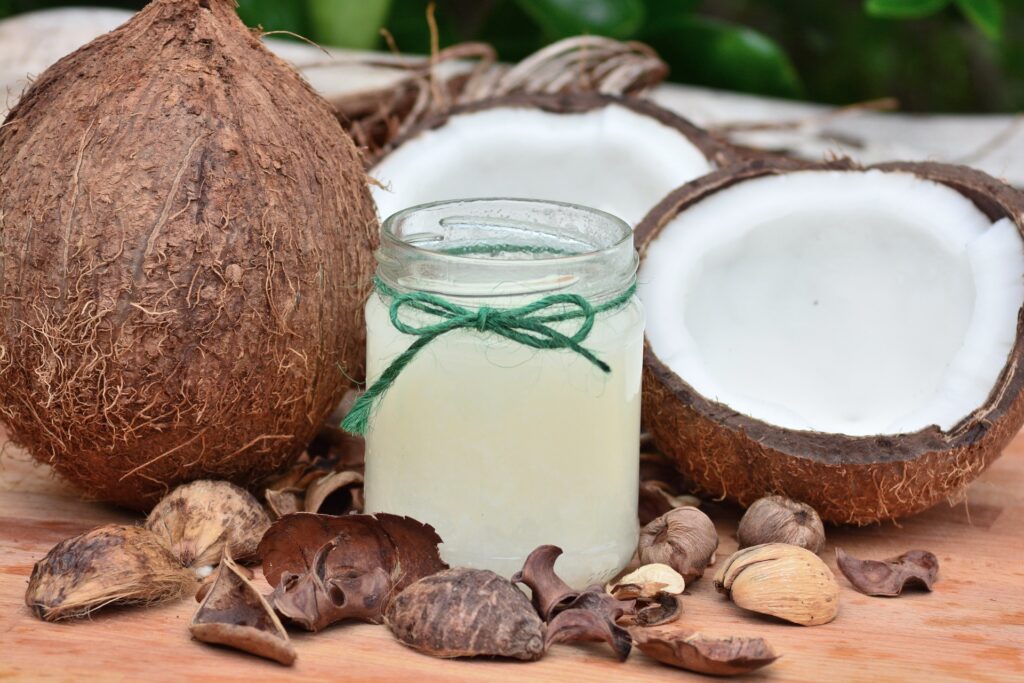
Instructions:
- In a bowl, combine the melted coconut oil, honey, and mashed avocado.
- Mix well to create a smooth paste.
- Apply the mask to damp hair, focusing on the ends.
- Cover your hair with a shower cap or plastic wrap.
- Leave on for 30 minutes to 1 hour.
- Rinse thoroughly with warm water and shampoo as usual.
Exfoliating Sugar Scrub:
This gentle scrub removes dead skin cells and leaves your skin feeling soft and smooth.

Ingredients:
- 1/2 cup brown sugar
- 1/4 cup coconut oil, melted (solid at room temperature)
- 2 tablespoons jojoba oil
- 10 drops of your favorite essential oil (optional) – Remember to do a patch test!
Instructions:
- In a bowl, combine the brown sugar, melted coconut oil, and jojoba oil.
- If using, add your chosen essential oil and stir well.
- Store in an airtight container.
- To use, apply a small amount of the scrub to clean, damp skin.
- Massage gently in circular motions, focusing on areas with rough skin like elbows and knees.
- Rinse thoroughly with warm water and pat your skin dry.
Luxurious Honey Lip Balm:
This balm keeps your lips soft and hydrated, especially during harsh weather conditions.
Ingredients:
- 1 tablespoon beeswax pellets
- 1 tablespoon coconut oil, melted (solid at room temperature)
- 1 teaspoon raw honey
- 1-2 drops of your favorite essential oil (optional, like peppermint or vanilla) – Remember to do a patch test!
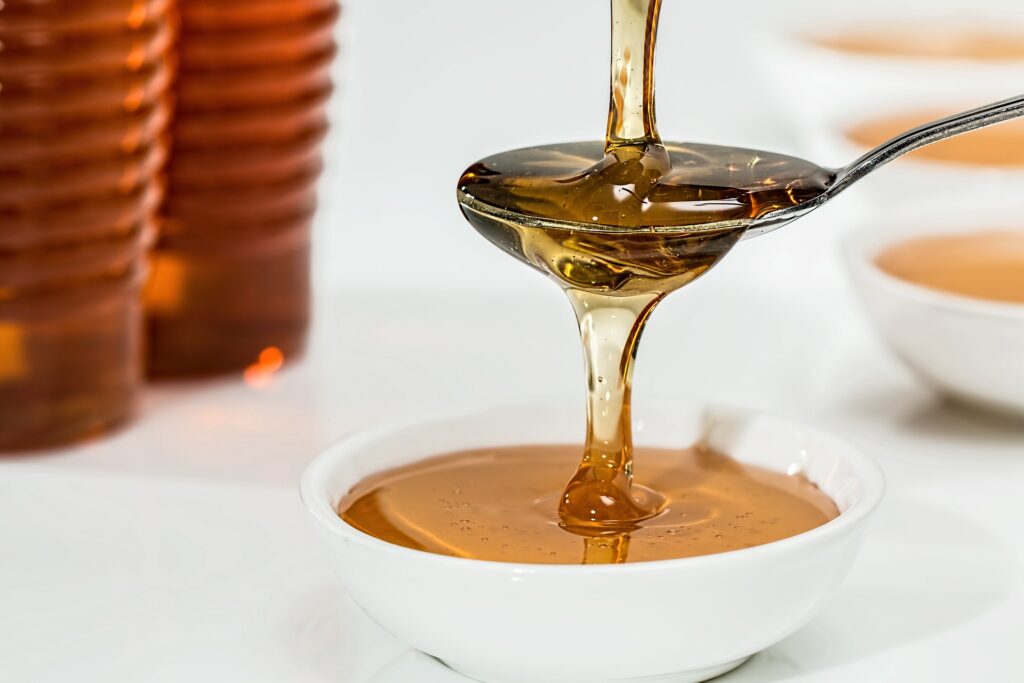
Instructions:
- In a double boiler (or a heat-resistant bowl placed over a pot of simmering water), melt the beeswax pellets and coconut oil.
- Once melted and smooth, remove from heat and stir in the honey.
- If using, add your chosen essential oil and stir well.
- Pour the mixture into a clean lip balm container or small tin.
- Let it cool completely and solidify before use.
Safety Tips:
- Always do a patch test before applying any DIY beauty product to your face. Apply a small amount to your inner arm and wait 24 hours to see if there’s any irritation.
- Never use essential oils undiluted on your skin. Always dilute them in a carrier oil before use.
- Be mindful of allergies. If you have any known allergies to certain ingredients, avoid using them in your DIY beauty products.
- Store your DIY creations in clean, airtight containers in a cool, dark place.
- Label your creations with the ingredients and date of manufacture.
- When in doubt, consult a dermatologist before using any new product on your skin.
The Final Touch:
Embrace the experience! DIY beauty is a fun and rewarding way to pamper yourself and create personalized products that cater to your specific needs. Don’t be afraid to experiment with different ingredients and find what works best for you. With a little creativity and these easy recipes, you’ll be on your way to achieving a natural, healthy glow – all while making sustainable choices for yourself and the planet!
Additional Resources:
Looking for more inspiration? Here are some helpful resources to explore the world of DIY beauty further:
- Websites:
- https://diynatural.com/ (DIY Natural)
- https://www.thesprucecrafts.com/ (The Spruce Crafts)
- https://wellnessmama.com/beauty/ (Wellness Mama)
- Books:
- “The Complete Book of Essential Oils & Aromatherapy” by Valerie Ann Worwood
- “The Soapmaking Workshop” by Bobbi Ann Cole
- “The Everything Beauty Book” by Eva Orner
Remember, creating a natural, sustainable beauty routine doesn’t have to be complicated or expensive. With a little effort and these handy tips, you can unleash your inner alchemist and pamper yourself from the comfort of your own home! So, have fun exploring, get creative, and enjoy the journey to a naturally radiant you!
DIY Beauty Products with Sustainable Ingredients: FAQs
This section dives deeper into addressing some common questions you might have about creating your own DIY beauty products with sustainable ingredients:
- What if I don’t have all the ingredients for a specific recipe? Can I substitute something?
Absolutely! The beauty of DIY is finding what works for you. Here are some tips for substitutions:
- Carrier oils: You can substitute one carrier oil for another with similar properties. For example, if the recipe calls for coconut oil, you could use jojoba oil or sweet almond oil instead.
- Butters: Shea butter and cocoa butter can often be substituted for each other. However, cocoa butter has a stronger chocolate scent, so keep that in mind.
- Honey: Maple syrup can be used as a substitute in some cases, but it doesn’t have the same antibacterial properties as honey.
- Essential oils: Never substitute essential oils without proper research! Some essential oils have different properties and can irritate the skin if not used correctly.
- My skin is super sensitive. Are DIY beauty products safe for me?
DIY beauty products can be a great option for sensitive skin, as you have control over the ingredients. However, it’s important to be extra cautious:
- Choose gentle ingredients: Opt for soothing ingredients like oatmeal, aloe vera, and calendula. Avoid harsh chemicals or artificial fragrances.
- Patch test everything! Before applying any new product to your entire face, do a patch test on your inner arm. Apply a small amount and wait 24 hours to see if there’s any reaction.
- Start simple: Begin with single-ingredient products or recipes with just a few ingredients. This helps you identify any potential irritants.
- How long will my homemade beauty products last?
The shelf life of your DIY products depends on the ingredients used. Generally, products with water content (like masks) will have a shorter shelf life than oil-based products like balms or scrubs.
Here are some tips for maximizing shelf life:
- Use fresh, high-quality ingredients.
- Store your creations in clean, airtight containers.
- Keep them in a cool, dark place, away from direct sunlight and heat.
- Label your creations with the date of manufacture.
- Use a preservative (optional): Consider adding a natural preservative like vitamin E or rosemary extract to extend the shelf life of your products. However, research proper usage and dilution rates for any preservatives you choose.
- What are some sustainable ways to package my DIY products?
There are many ways to package your DIY creations in an eco-friendly way:
- Repurpose old containers: Clean and reuse glass jars, tins, or plastic containers you already have at home.
- Opt for reusable packaging: Consider purchasing small, reusable jars or tins specifically for your DIY beauty products.
- Get creative: Use recycled paper or fabric scraps to create labels or decorative touches.
- I’m not very crafty. Can I still participate in DIY beauty?
Absolutely! DIY beauty doesn’t require advanced crafting skills. Many recipes are incredibly simple and require minimal effort. Start with basic recipes like a honey lip balm or a sugar scrub. As you gain confidence, you can explore more complex creations.
- What if my DIY product doesn’t turn out the way I expected?
Don’t get discouraged! Experimentation is part of the DIY beauty process. If a product doesn’t have the desired consistency or texture, try tweaking the recipe slightly next time. There are many online resources and communities dedicated to DIY beauty where you can find troubleshooting tips and inspiration.
- Can I give my DIY creations as gifts?
Homemade beauty products make fantastic, personalized gifts! Just ensure the recipient doesn’t have any allergies to the ingredients and include a label with the ingredients list and date of manufacture.
- Is it safe to use essential oils in DIY beauty products?
Essential oils can be beneficial in DIY beauty products, but they must be used with caution:
- Always dilute them: Never apply essential oils directly to your skin. Dilute them in a carrier oil before use. A common dilution rate is 3-5 drops of essential oil per 1 tablespoon of carrier oil.
- Do a patch test: Before using any essential oil on your face, do a patch test on your inner arm.
- Research is key: Not all essential oils are created equal. Some essential oils can be irritating or have other health risks if not used properly. Research the specific essential oil you plan to use and ensure it’s safe for topical application.
- Where can I find high-quality, sustainable ingredients for DIY beauty products?
There are several options for sourcing sustainable ingredients:
- Local farmers markets: Look for local vendors selling organic fruits, vegetables, and herbs. You might find some ingredients like honey, beeswax, or fresh aloe vera directly from local producers.
- Health food stores: These stores often carry a wide selection of organic carrier oils, butters, and other natural ingredients.
- Online retailers: Several online retailers specialize in sustainable and ethically sourced ingredients for DIY beauty products. Do your research to find reputable vendors with positive customer reviews.
- Are there any safety concerns I should be aware of when making DIY beauty products?
It’s always important to prioritize safety when creating your own beauty products:
- Hygiene is key: Maintain a clean workspace and wash your hands thoroughly before handling ingredients and containers.
- Use proper equipment: Invest in basic tools like measuring spoons, mixing bowls, and spatulas specifically for your DIY creations.
- Label everything: Clearly label your ingredients with their names and expiration dates.
- Less is more: Start with a small batch of any new recipe to minimize waste if it doesn’t turn out as expected.
- When in doubt, consult a professional: If you have any concerns about using a specific ingredient or have underlying skin conditions, consult a dermatologist before using any DIY beauty products.

